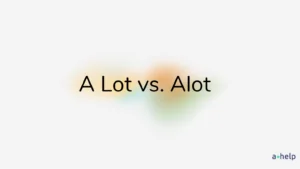Colons (:) and semicolons (;) might look similar, but they have different uses. To make a long story short, a colon is used to introduce a list, a quote, or an explanation. A semicolon is used to connect two independent clauses that are related. It’s like a stronger comma but not as strong as a period, to put it simply. Use a grammar and spelling checker to avoid mistakes, if you’re anxious about making it in your texts.

✅ AI Essay Writer ✅ AI Detector ✅ Plagchecker ✅ Paraphraser
✅ Summarizer ✅ Citation Generator
For example, the sentence “I went to the store; it was closed” states two connected things happening, so we use a semicolon. And in the case of colons, “I need the following items: bread, milk, and eggs” signifies a simple list that needs to be introduced, so we use a colon.
Remember, colons introduce something new, while semicolons link related ideas.
Where to Use a Colon?
A colon is a punctuation mark that serves several important functions in writing. Mainly, it is used to introduce a list, a quotation, or an explanation. Yes, it’s as simple as that.
- You will need the following items for the recipe: flour, sugar, eggs, and butter.
In this case, the colon points us to a list of ingredients required for a recipe. It signals to the reader that what follows is a direct specification of the preceding statement, so basically we stated that there is a certain list and then elaborated on it.
- The poet once said: ‘The only way to have a friend is to be one.’
Here, the colon is used to introduce a quotation. It separates the speaker’s words from the quoted material, and makes it clear that the following text is a direct quote from said poet.
- Grace had one goal in mind: to become the best athlete in her field.
And finally, here the colon is used to introduce an explanation to the first part of the sentence. It shows that the information following the colon directly explains, even expands upon what came before (Grace has a goal and what that goal is).
So, the colon helps to organize information and clarify relationships between ideas. When using a colon, you should pay attention to whether the part before the colon is a complete sentence and that the information following the colon directly elaborates on that sentence.
When Should I Capitalize Colons?
When using a colon in writing, capitalizing the word after the colon depends on the context. Let’s go through them one by one. If the colon introduces a complete sentence, you can capitalize the first word after the colon. (“She had a clear goal: She wanted to become the best athlete in her field.“)
If the colon introduces a list or a fragment, do not capitalize the first word after the colon. (“She had a clear goal: to become the best athlete in her field.”)
Always capitalize proper nouns (names, places, etc.) following a colon, regardless of whether they start a complete sentence or not. (“The conference will be held in two cities: New York and Los Angeles.”) Finally, in titles and subtitles, capitalize the first word after the colon. (“The Great Gatsby: A Classic American Novel.”)
Where to Use a Semicolon?
A semicolon is a punctuation mark that has two goals: to link independent clauses and to separate items in a complex list. In the first case, a semicolon can be used to connect two independent clauses that are related in meaning. This is particularly handy when you want to show a relationship between the two clauses without using a conjunction like “and” or “but.”
- She loves to read; her favorite genre is mystery.
When you have a list of items that already has commas, you can avoid confusion by clearly separating each item with a semicolon.
- The conference will be held in three cities: Paris, France; Tokyo, Japan; and New York, USA.
📍 Additional tips for you:
- Do not use a semicolon to connect a dependent clause or a phrase to an independent clause.
- Use a semicolon to separate two independent clauses connected by transitional phrases like “however,” “therefore,” or “for example.”
- Example: “She wanted to go for a walk; however, it started to rain.”
So, keep in mind, that semicolons can improve the flow of your writing and are used in several contexts. Semicolons help readers understand the relationships between different parts of a sentence, and that is its main purpose.
Do You Use a Colon or a Semicolon with Lists?
When it comes to lists, both colons and semicolons can be used, but in different contexts.
A colon is typically used to introduce a list, especially when the list is continuing the sentence that is before it. On the other hand, semicolons are used in lists when the items themselves have commas, so that they are clearly separated and not confused.
And there you have it! Now you know when to pick a colon or a semicolon when writing essays, assignments, and any other papers.
FAQ
Follow us on Reddit for more insights and updates.





Comments (0)
Welcome to A*Help comments!
We’re all about debate and discussion at A*Help.
We value the diverse opinions of users, so you may find points of view that you don’t agree with. And that’s cool. However, there are certain things we’re not OK with: attempts to manipulate our data in any way, for example, or the posting of discriminative, offensive, hateful, or disparaging material.